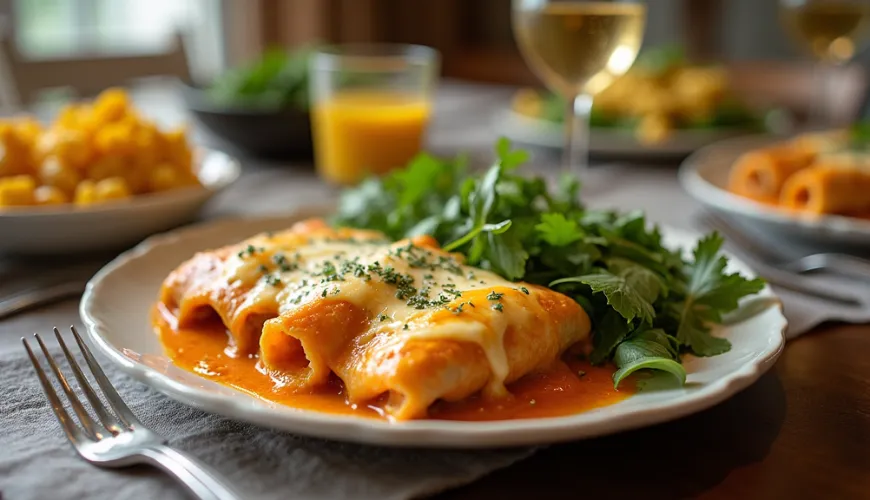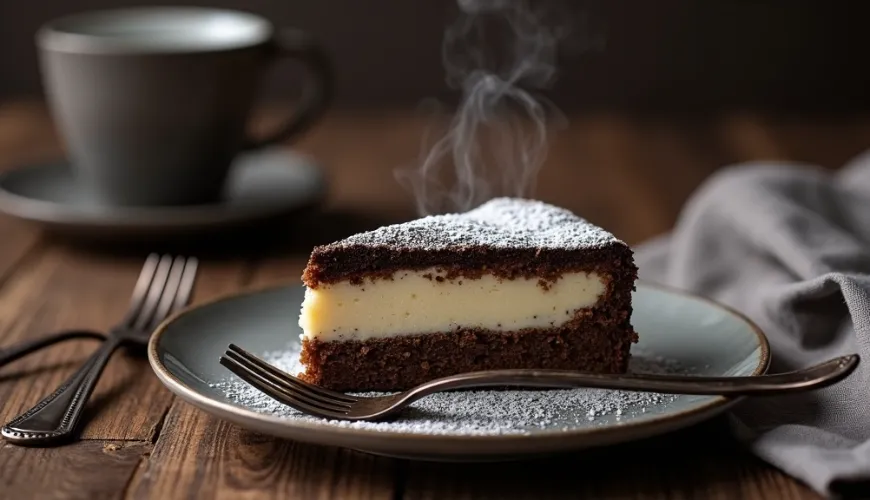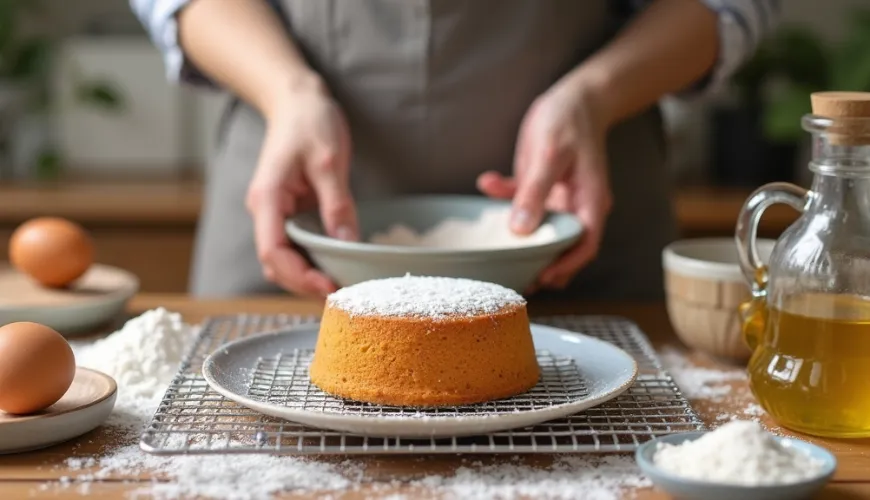
The lunar landscape and its variations you'll love

When a Sweet Treat is Called Moon Landscape - More Than Just a Recipe
In Czech kitchens, everyone has their favorite treasure—whether it's grandma's buns, Linzer cookies, or homemade pies. But some recipes have a special charm. They're not just about taste, but also about memories, sharing, and a little bit of mystery. One such dessert is the moon landscape, a somewhat mysteriously named cake that has come back into fashion in recent years. And not only that—it’s going viral on social media, attracting attention with its simplicity and visual appeal.
What Exactly is the “Moon Landscape”?
Behind this poetic name lies a moist, dark cake—often with cocoa or chocolate batter—into which light "craters" of sour cream or quark are spooned. During baking, the cream sets and creates irregular light spots on the surface, reminiscent of the moon's surface. That's where the name "moon landscape" comes from. This cake is not only visually striking but also very tasty—it combines moist batter with a delicate creamy topping and pairs perfectly with coffee, tea, or as a dessert for celebrations.
When you think about why this name, you might recall children's drawings of space, where the Moon was always cratered and had a mysterious atmosphere. This treat affects you in the same way—mysteriously, enticingly, and yet familiarly. It's no wonder it appears at family gatherings, where guests often guess how this cake is prepared.
Moon Landscape Recipe - How to Do It?
There are many variations of this cake online, and each family often has its version. At its core, the simple principle remains—dark batter and light spots. Here's a basic version you can adjust to your taste.
Ingredients for the Batter:
- 2 eggs
- 150 g granulated sugar
- 250 ml kefir or buttermilk
- 100 ml oil
- 2 tablespoons cocoa
- 250 g plain flour
- 1 baking powder
For the “Craters”:
- 500 g sour cream or quark
- 1 egg
- 1 vanilla sugar
- 2 tablespoons powdered sugar
Instructions:
- First, beat the eggs with sugar until foamy, then add oil and kefir. Next, add cocoa, flour mixed with baking powder and mix into a smooth batter.
- Pour the batter into a greased and floured baking tray.
- In a bowl, mix sour cream (or quark) with the egg, vanilla sugar, and powdered sugar.
- Using a spoon, place light heaps of the mixture onto the batter—irregularly, to create the “moon landscape” effect.
- Bake in a preheated oven at 180 °C for about 30–35 minutes.
The result? A delicately moist cake with contrasting light spots that is not only delicious but also visually appealing. Ideal when you want to impress without complicated baking.
A Cake with a Story
Like every dish, the “moon landscape” carries its story. In many households, this recipe is associated with a particular person or memory. One example: Ms. Michaela from Pardubice recalls how her aunt used to bake this cake every time she stayed over during holidays. "It was our ritual—we'd go to bed together in the evening, and in the morning, this cake was on the table. We never called it anything other than moon landscape," she says. And such memories turn an ordinary cake into something more—a piece of home and love on a plate.
Why is the Moon Landscape Making a Comeback?
At a time when sustainability and a return to simplicity are becoming key themes not only in eating habits but also in lifestyle, it makes sense that people are turning back to our grandmothers' recipes. The moon landscape is a typical example of a dessert that doesn't require exotic ingredients, is cheap, easy, and yet tasty.
Moreover, many people are looking for ways to reduce food waste—and this recipe is a great way to use leftover sour cream, quark, or kefir. A sweet treat that is efficient, inexpensive, and yet still modern—that's precisely what today's households are looking for.
Variations Worth Trying
The moon landscape recipe is versatile and easily adapts to different tastes. Instead of classic cocoa, carob can be used, which is a sweeter and healthier alternative. For a lighter version, whole wheat flour can be used, or a bit of oatmeal can be added. And for those who love fruity tones, cherries or raspberries can be added to the batter, creating an interesting flavor contrast.
Interesting is also the use of plant-based options—for instance, coconut cream or cashew quark, appreciated by vegans and people with lactose intolerance. This is where tradition beautifully meets modern dietary approaches. As the well-known culinary journalist Petr Kamberský says: “A good recipe is not a preserved formula, but a living organism that adapts to the times and people.”
Moon Inspiration Not Only in the Kitchen
It's interesting that the term “moon landscape” is also appearing outside the cake itself. On social media, this tag is used for minimalist decorations, textiles with a Moon motif, or even natural cosmetics inspired by lunar energy. This phenomenon shows how the Moon and its magical symbolism continue to attract us—in food, design, and everyday life.
So next time you hear the words “moon landscape,” you might not just imagine a distant crater full of dust, but a fragrant cake on the table, the warmth of home, and a moment when time slows down. Because some recipes are not just about ingredients. They are about emotions, tradition, and shared moments—and therein lies their true magic.

